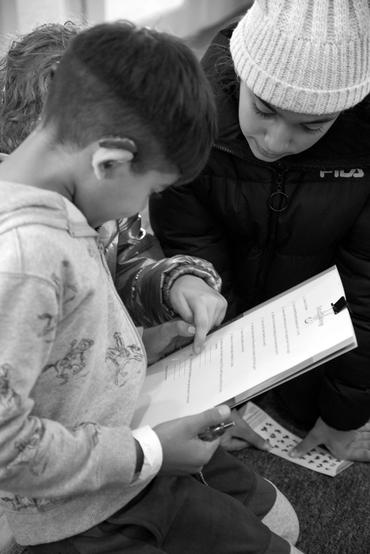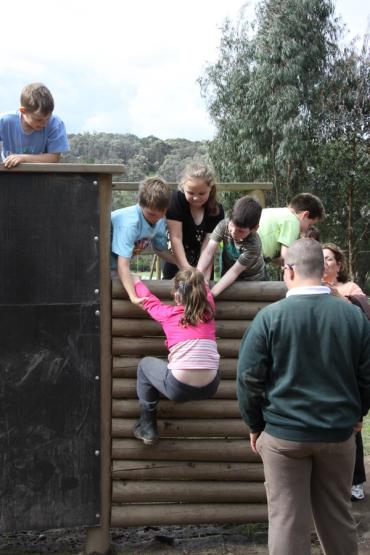About assistive listening devices.
Here, we’ll talk about sound amplification systems. These are often used in noisy environments, such as school classrooms, to help a child hear better.

Caption
Source: Source
Assistive listening devices
Several devices are available to help your child hear spoken language, which is vital if they are going to learn spoken language. These are called amplification devices or assistive listening devices. They include hearing aids, cochlear implants, and sound amplification systems such as remote microphone systems and loop systems.
Your child may use one type of device, or a combination. Your audiologist can discuss which devices are best suited to your child’s needs.
Click to learn more about hearing aids here.
Click to learn more about cochlear implants here.
Remote Microphone Systems (FM Systems)
FM technology improves what is known as the signal-to-noise ratio (SNR), which is the difference in loudness between the main sound signal (such as the teacher’s voice) and the background noise.
Although modern hearing aids improve the clarity and loudness of speech, listening can still be difficult in noisy environments such as school classrooms. remote microphone systems are an effective way to aid speech understanding in situations that involve listening challenges, including background noise, distance from the person speaking, and reverberation (echo).
Remote microphone systems work in partnership with hearing aids. The speaker wears a remote microphone close to their mouth, often on their lapel. Using wireless technology, this transmits the sound directly to a receiver, which is usually attached to the hearing aid.
Remote microphone system technology improves what is known as the signal-to-noise ratio (SNR), which is the difference in loudness between the main sound signal (such as the teacher’s voice) and the background noise level. By picking up the speaker’s voice much closer to their mouth and delivering it directly to the hearing aid, this helps to offset the effects of background noise, distance, or reverberation.
This enables the child to better understand what the speaker is saying, which is important because children need speech to be intelligible, not just audible, in order to learn.
Although modern hearing aids improve the clarity and loudness of speech, listening can still be difficult in noisy environments such as school classrooms
Audio frequency induction loops
Audio frequency induction or loop systems are mainly used to improve the SNR by eliminating background noise. They consist of a loop of wire that goes around an area (such as a room) and is connected to an amplifier. The signal that needs to be heard (eg the sound from a television or PA system) goes to the amplifier, which pushes a current through the loop.
Loop technology is relatively inexpensive and most hearing aids have the telecoil built in
This creates a magnetic field within the looped zone which is transmitted to the telecoil in a hearing aid. When your child switches their hearing aid to the ‘T’ position, the telecoil picks up the magnetic field changes, then converts them back into alternating currents. These are amplified and converted into sound by the hearing aid.
Loop technology is relatively inexpensive and most hearing aids have the telecoil built in. Loop systems are commonly used in cinemas, lecture theatres, churches, on public transport and in homes. You can also get personal neck loops for watching TV and using devices such as mobile phones.
Captions
Captions can be a useful way for children who are deaf or hard of hearing to follow what’s happening in movies and TV shows. They can also support the development of your child’s vocabulary and reading skills.
On digital television, choose "subtitles" from the on-screen menu to get captions. Your TV guide should include information about which programs have them. Many DVDs also have subtitles, which you can access using the DVD’s main menu.
The National Relay Service
This Australian Government Initiative offers phone solutions for people who are deaf or hard of hearing, including children. Calls are made through a relay officer via an internet or video relay, mobile phone or ordinary telephone. They can be made 24/7 and all call details are kept confidential. Visit their website to find out more.



